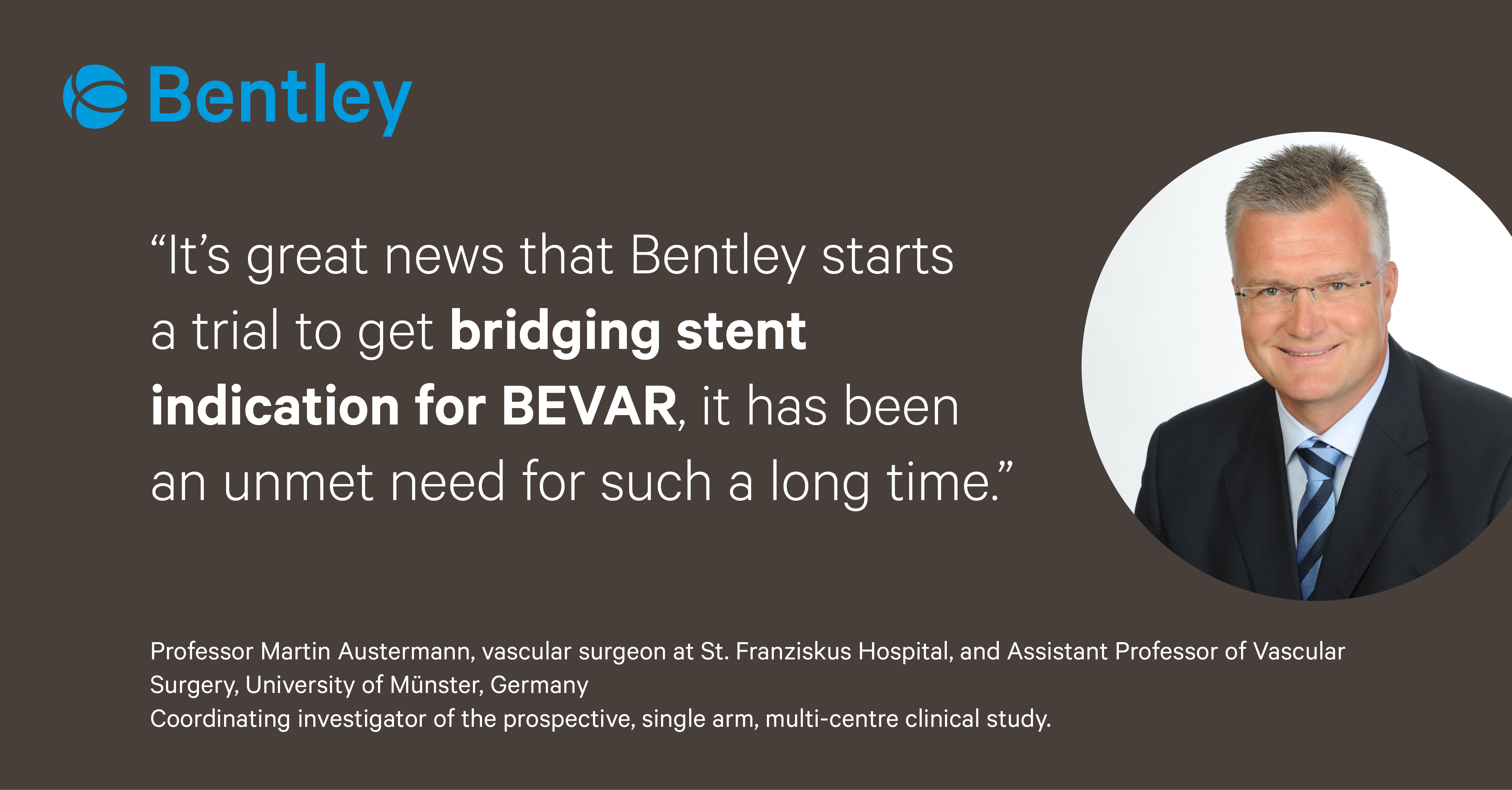
Last week, the first patient was recruited into a trial investigating the BeGraft Peripheral Plus Stent Graft System (Bentley InnoMed, Hechingen, Germany) as a dedicated bridging stent in BEVAR (branched endovascular aortic repair) for the treatment of complex aortic aneurysms. It is the first study of its kind worldwide.
Professor Martin Austermann, vascular surgeon at St. Franziskus Hospital, and Assistant Professor of Vascular Surgery, University of Münster, Germany, is the coordinating investigator of the prospective, single arm, multi-centre clinical study.
“Until now, we have not had a dedicated indicated bridging stent to connect branched endografts with renal and visceral arteries,” said Professor Austermann. “ There are many devices that could be used for this, but all in an off-label setting.”
“It’s great news that we could start a trial in collaboration with the Foundation for Cardiovascular Research and Education and Bentley for this indication, it has been an unmet need for such a long time,” he added. “We are very pleased to run this study, which is approved by the German national competent authority BfArM, together with some other colleagues working in high volume centres in Germany. For us, as endovascular specialists, it is key to work as much as possible with medical devices that are indicated for certain procedures.”
Eligible patients are those seeking elective repair of thoracoabdominal aortic aneurysm (TAAA) with BEVAR. The trial aims to carry out 100 BEVAR procedures with an average of 2,5 bridging stents per procedure.
The primary efficacy endpoint is comprised of a measure of technical success defined as the successfully introduction and deployment of the BeGraft Plus implanted as a bridging stent in BEVAR, with bridging stent patency at 12 months (absence of binary restenosis (≥50% stenosis)) or sole target vessel occlusion based on CT Angio at 12 months. The primary safety endpoint at 12 months relates to the absence of procedure-related complications and bridging stent related endoleaks.
“In one or two years the trial will provide us with valuable information on occlusions or stent fracture, for example. We will be able to let the patient know what to expect, and it will make the procedure more predictable,” Professor Austermann pointed out.
The BeGraft Plus uniquely combines an extraordinary radial force with a remarkable flexibility. It consists of two layers of micro-porous expanded polytetrafluoroethylene (ePTFE) tubing based on two cobalt chromium stents and has a ‘sandwich’ design. The outer ePTFE layer provides fixation of the outer stent and guarantees sealing properties. It also protects the inner ePTFE layer and prevents endoleaks. The inner PTFE layer provides a sealing of the aneurysm and the inner stent supplies fixation of the inner and outer ePTFE layer. Compared to the other available bridging stent grafts it has an up to 3.5 times higher radial force and is kink-resistant, making it an ideal bridging stent in BEVAR.
“We believe that high-end medical technology is key to better patient care and health in vascular disease. This is Bentley´s vision and we always aim to prove the benefit of our products with clinical evidence,” said Dr. Martin Schirling, Clinical Affairs Manager, Bentley.
“Once again Bentley is pioneering the provision of safe and effective products to improve patient outcomes and to offer clinically proven solutions to our customers.”
Contact: Kerstin Stotz, Communication & Event Coordinator, k.stotz@bentley.global, +49747198499559
Kundenservice:
+49 7471 984 995 10
Bentley InnoMed GmbH
Lotzenäcker 3
72379 Hechingen / Germany
+49 7471 99 99-0
Kundenservice:
+1 770 295 2288
Bentley US Inc.
2220 Northmont Pkwy. Suite 250
Duluth, GA 30096 / USA
+1 770 295 2288